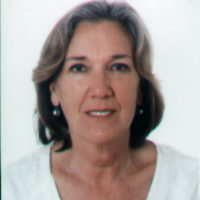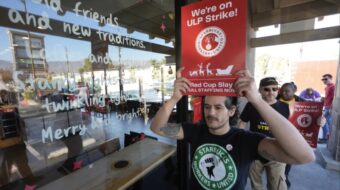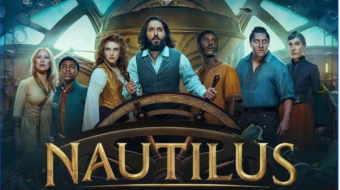
Forgive the pun, but the irrefutable American investigative journalist Seymour Hersh dropped a bomb in Washington’s lap with his Feb. 8 meticulous exposé “How America Took Out the Nord Stream Pipeline.” This was something that many felt they already knew, however the forensic details were lacking. But, according to Hersh, a single anonymous inside source has provided that info, in spades.
But the big surprise was the role of Norway, apparently a willing partner in the U.S. Navy’s underwater sabotage, which deprived much of Western Europe of cheap Russian natural gas to hold freezing winter at bay. “May others suffer to punish the Russians” seems to be the idea.
I happened to be in a meeting in Oslo with a Norwegian explosives expert on Sept. 28, 2022, two days after the spectacular blow-up in the South Baltic Sea. Our meeting concerned Vietnam, but it was interrupted toward the end, as major Norwegian media were clamoring for the expert’s assessment of the pipeline explosion as more information was coming to light—although Norway’s role was not then known, at least not publicly.
Follow the seemingly disparate threads laid out here, as they will be woven back into a larger tapestry of global reach. My trip to Norway last fall was a brief extension of a three-month stay at my California-born son’s home near Stockholm. The explosives expert heads up a very effective program at Norwegian Peoples Aid (NPA) to detect and remove UXOs (Un-Exploded Ordinance) from former battle sites around the world.
READ ADDITIONAL PEOPLE’S WORLD PIPELINE COVERAGE:
> Pipeline ploy: How U.S. natural gas interests are fueling the Ukraine crisis
> Fake Ukraine referendums, pipeline sabotage raise danger of wider war
> U.S. fossil fuel monopolies the big winners in Ukraine war
> Freeze or starve? Sanctioning Russia leaves Germans a choice this winter
NPA is in fact a huge, well-respected, and internationally-known non-profit that supports myriad good works. My connection to NPA comes via Vietnam and my 20-year associate membership in Veterans For Peace, San Francisco chapter, as Director of Communications. Since VFP was founded in 1985 by veterans of the American War in Vietnam, many of the more than 100 chapters fund and support humanitarian projects for the victims of U.S. wars in Korea, Southeast Asia, the Middle East, etc.

There is a Hoa Binh (Peace) chapter of VFP in Vietnam of American vets who initiated an ongoing UXO-removal organization called ProjectRENEW in Quang Tri Province, the most bombed area of central Vietnam. Laos, Cambodia, and Vietnam were on the receiving end of perhaps ten times the explosive power of all of World War II, including Hiroshima and Nagasaki.
Norwegian Peoples Aid valiantly made a small dent in the UXOs by funding ProjectRENEW for several years. My meeting was a courtesy visit as a VFP representative in the hope that additional funding might resume at a later date. (I am on the board of both the Asian and the state-side chapters, the only female and only non-vet).
It is ironic that Norway, as well as many other countries globally, should aid the victims of America’s wars. Ironic too that, as a young journalist, Sy Hersh became world-famous in 1969 by exposing the My Lai Massacre of March 16, 1968, when 500 Vietnamese civilian villagers died at the hands of U.S. soldiers. My Lai was key to shifting our nation’s conscience, finally turning it against that war.
All this so far is not “full circle” but a thread nonetheless: NPA’s positive role in Vietnam, Hersh’s courageous Vietnam truth-telling, and now, once again, more of his unpopular revelations about American crimes—with Norway in the mix!
Thankfully, no one died in the pipeline’s destruction on Sept. 26, but many a European is suffering in the cold, now unable to pay two and three times their normal heating bill. Among the lower-income populous, the saying is apparently now “heat or eat.”
Economic damage to Russia for invading Ukraine? That country owns 51% of the Nord Stream enterprise, with the Dutch, French, and Germans left holding the bag on the rest of the lost infrastructure and revenue.
Although a Washington task force—which included the Navy, Joint Chiefs of Staff, the CIA, and State and Treasury Departments—was the genesis of the sabotage alleged by Hersh, his, source says Norway was pulled in, as a prominent member of NATO, as well as for its proximity to the chosen underwater explosion site off the coast of Denmark. Extensive Norwegian diving expertise with off-shore North Sea oil rigs was a big plus.
Additionally, and most importantly, Hersh tells us the Pentagon has invested “hundreds of millions of dollars to upgrade and expand American Navy and Air force facilities in Norway”—a loss of sovereignty that does not sit well with many Norwegians.
In a seamless connection, Jens Stoltenberg, NATO’s current “supreme commander” was Norway’s prime minister for eight years not too long ago.
Besides, with Russian natural gas off the market, more energy resources, like Norwegian and American, will have to be procured by Western Europe, to say nothing of the global economic impact! Past environmental controls on fracking, oil and gas exploration, coal, and nuclear are now out the window. Dirty, and more profitable, energy floodgates are opening wide every day. God help the climate crisis!
But as much as he is to be admired for his thoroughness, Hersh missed one more draw unique to Norway, which ties into my reason for the Oslo stopover. I had three goals in mind for the three full days I had there: NPA, The “Homefront” Museum (Museum of the Resistance to the German occupation of 1940 to ’45), and the Nobel Peace Prize Museum. So, Wednesday morning Sept. 28 found me leaving the NPA headquarters for a short stroll to the medieval Akershus Fortress overlooking the scenic, old harbor to delve into the fascinating history of Norwegian partisans blowing up all things Nazi 80 years ago.
The Norwegians are explosives experts, with a long history of sabotage with dynamite—invented a century and a half ago, a mere 320 miles away in Stockholm by Alfred Nobel. Whole ships, entire railroad lines, strategic bridges, and crucial war-productions factories blew to pieces and went up in smoke, much to the approval of our World War II Allies, other civilian resistance groups, and all populations living (and dying) under German invasion and occupation.
Members of Norway’s Communist Party took the lead in damaging Germany’s war machine on their soil. Russia (the USSR) was a key ally—more ironies.
The Soviet sacrifice of 27 million dead far overshadows all others in the Second World War, but in the Western European lore of spies, saboteurs, and guerrilla fighters, Norway’s reputation, in particular, is quite exalted in this pantheon—especially when held up to other Scandinavian countries which were either “neutral” or acquiescent.
A visit to the Resistance Museum was always definitely on my itinerary. A chill ran up my spine when I learned that cells holding POWs were housed in the basement of the very same ancient stone building that now holds the museum. A small walled area just outside was used for the executions of freedom fighters. Norwegians valiantly fought back, mostly with dynamite.
Today, C4 explosives are the thing, and they were allegedly used to take out three of the four Nord Stream pipelines. Planning started in Washington in late 2021, reports Hersh, ahead of Russia’s February 2022 invasion of Ukraine.
Could Washington have guessed that the Russians felt threatened by massive Western military build-ups on their northern—and central and southern, as well as eastern borders?

No matter, Hersh’s source says that Washington task force members flew across the Atlantic to meet with their Nordic secret service and naval counterparts to negotiate the joint operation. Maybe it was “pay-back time” for the “hundreds of millions of dollars” poured into that country for U.S. bases in the north of Norway?
Therein lies another irony, as the present American bases in the far north of Norway are in or near the very same area where combined Soviet and Norwegian forces spent six months from 1944 to ’45 driving out the Germans. That protracted battle began with a Soviet offensive that liberated a Nazi-occupied Norwegian city just over the narrow border between Russia and Norway. Early in the war, the Norwegian government-in-exile established a military mission in Moscow! Now a united Germany is a key Western ally in a “war against Russia”?!
The last stop in my Oslo visit was the Nobel Peace Prize Museum, just the other side of the small harbor from the fortress. Swede Alfred Nobel gave no reason in his 1901 will why his vast fortune would be used to fund a Peace Prize to be given by a foreign government in Norway. Annual prizes in four categories, three scientific and one literary, are logically awarded by a Swedish committee.
The Oslo government-appointed Nobel Committee is highly politicized, a museum docent confided to me privately. He noted my Veterans For Peace bag as soon as I paid for admission at the museum desk. I then got a personal tour and an extended conversation with him about the selection of the awardees—no surprise with a NATO-headed Stoltenburg government in power.
Global economic and military realities are indeed made up of complex and contradictory threads, producing a mind-boggling “tapestry”—with many holes in it. Truth is stranger than fiction, and my innocent tour of Norway’s capital last fall seems to have touched on multinational histories and present crisis situations.
As with all op-eds published by People’s World, this article reflects the opinions of its author.
People’s World has an enormous challenge ahead of it—to raise $200,000 from readers and supporters in 2023, including $125,000 during the Fund Drive, which runs from Feb. 1 to May 1.
Please donate to help People’s World reach our $200,000 goal. We appreciate whatever you can donate: $5, $10, $25, $50, $100, or more.











